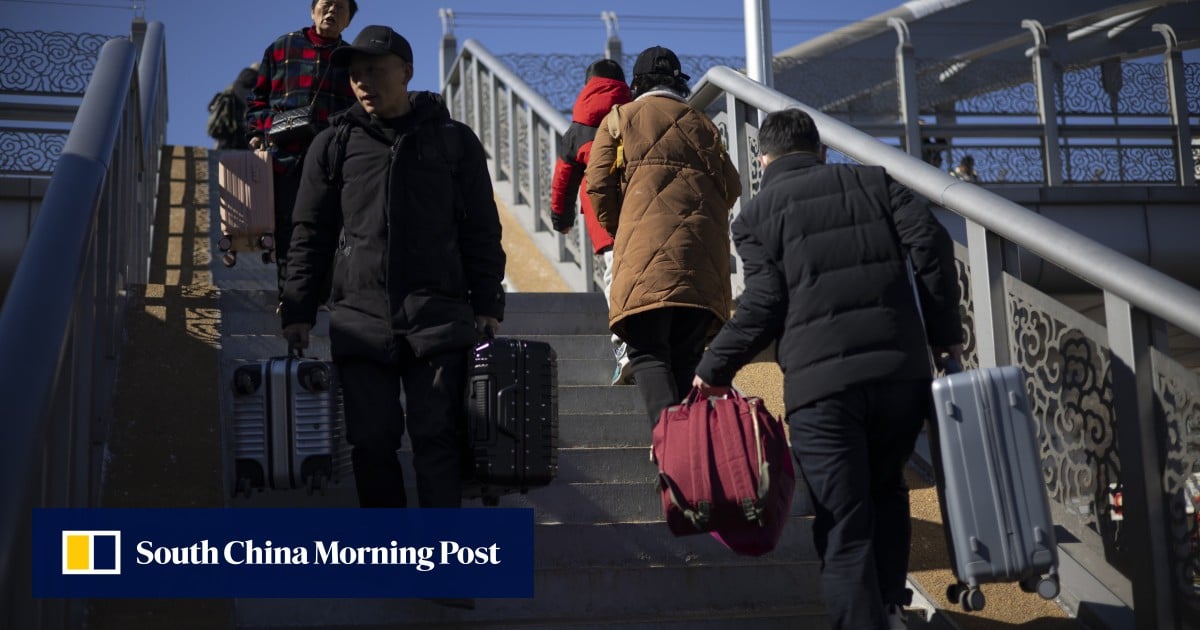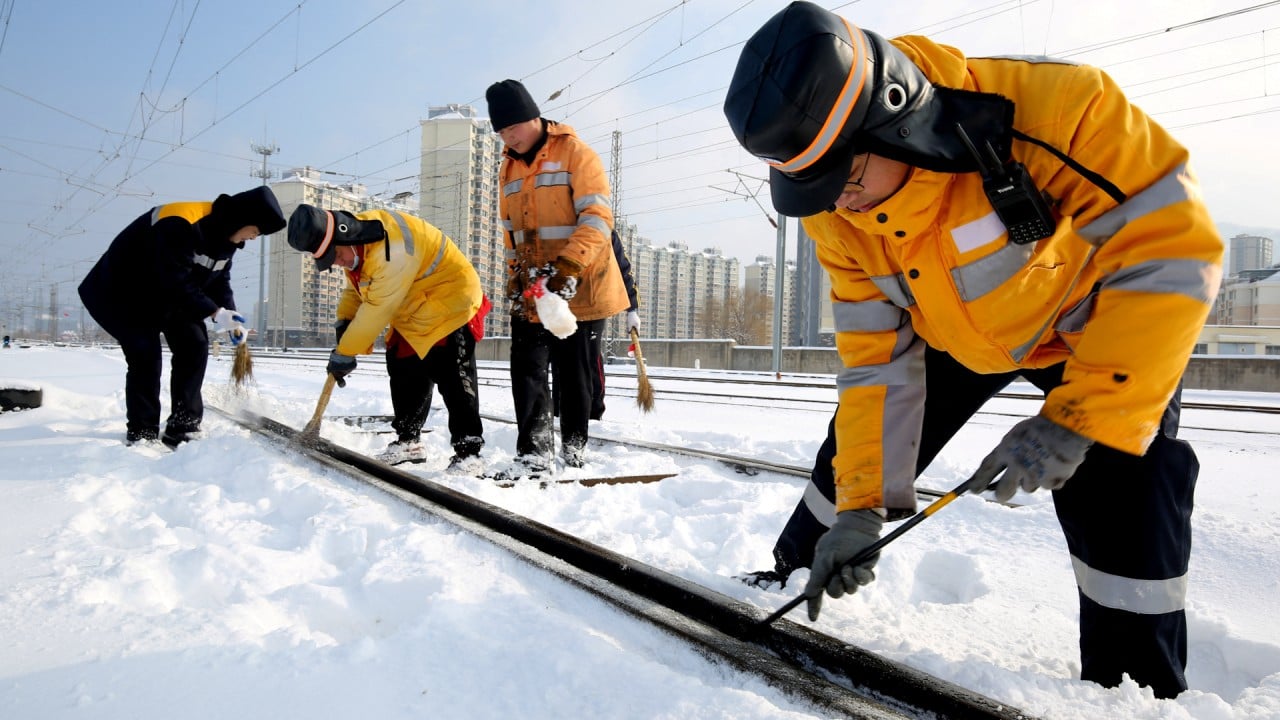On Thursday alone, travellers made 315 million “cross-regional” trips by train, plane, bus, car and boat, according to the Ministry of Transport. That was up from 306 million on Wednesday and 301 million on Tuesday.
More than 1,200 extra train services have been added across the country to cope with the increased passenger numbers, state broadcaster CCTV reported on Friday.
Airports are also busy, with more than 2.35 million flights booked for Friday across China – the most of any day in the coming week, according to the civil aviation authority.
The Lunar New Year is China’s biggest holiday and this year runs for eight days instead of seven, as authorities try to boost domestic tourism and the sluggish economy. The holiday – which ends on Saturday – falls within a 40-day festive travel period, a time when millions make the pilgrimage to their hometowns to see family.
After the break, many travellers will be returning to the country’s more developed, affluent cities such as the capital, Beijing, as well as Shanghai, Guangzhou and Shenzhen, according to Qunar, one of China’s biggest online travel agencies. Wuhan, Changsha and Hangzhou were also among the popular destinations for returning travellers.
China dad flies daughter, 7, home for Lunar New Year in plane, beats traffic
China dad flies daughter, 7, home for Lunar New Year in plane, beats traffic
In the Yangtze River Delta region, an economic powerhouse, more train services have been added for cities like Beijing, Shanghai, Shenzhen and Xuzhou to cope with the end-of-holiday rush, according to media reports in Shanghai. Travellers were expected to take some 2.55 million railway trips in the region on Friday.
Meanwhile, first-tier cities such as Beijing and Shenzhen have extended service hours for their subway systems in preparation for the large numbers of travellers heading home.
Some 120,000 trips were expected through the airport in Haikou, the capital of Hainan, and 90,000 at Harbin’s airport, according to local media reports.
The influx of tourists in Hainan over the holiday period has meant those who did not book a return journey are finding it hard to get a plane ticket, with some having to pay for business class to get home. With many travellers stranded, the civil aviation authority is talking to the airlines to put on more flights out of Hainan.
Motorists are also finding it hard to leave the island, with ferry services from all three ports in Haikou temporarily suspended at midnight on Friday due to heavy fog. They were back up and running at around 8am, but there were long waits for cars to get on ferries at the ports. There have also been complaints of ticket shortages for the ferries, prompting the authorities to arrange extra services for people travelling by car in the coming days.
Year of the Dragon may spark short-lived interest in lizards as pets in Hong Kong
Year of the Dragon may spark short-lived interest in lizards as pets in Hong Kong
This year’s Lunar New Year break has seen a surge in travel compared to 2023. According to the railway authorities, 230 million train trips were taken in the peak travel period from January 26 to February 14.
Some 480 million trips are expected over the whole 40-day travel season – far more than the 348 million recorded in 2023 and the 410 million trips in 2019, before the pandemic.


